An admission. Maybe it’s a result of being in this job for as long as I have, but photoshoots for bike tests aren’t my favourite part of it (Editor's note: John is features editor over on our sister magazine, Cycling Plus, and an occasional contributor to BikeRadar). Yes, you’re on bikes in a pretty part of the country but there’s one big problem – you don’t actually do much cycling.
I’m straying into how the sausage is made territory here, but the days are long, you ride over the same stretch of tarmac for take after take after take, and the photographers have you ride in some rather unreasonable, unnatural positions, always for the good of the shot. Inside leg down through a bend, for instance, or sprinting in the big ring in the drops up a 15 per cent gradient, which even Marco Pantani in his pomp would have found a bit unreasonable.
We also get called upon to do shoots all year round, so you might find yourself high up in the Brecon Beacons in December, trying to remember the sensation of feeling your toes. Unless you’re riding some rarefied superbike, or training for hill climb season, the days can drag a bit.

They did before gravel bikes appeared on the scene, anyway. Because you go off-road and into the wild, the photographers will get on a bike themselves for a gravel shoot and, rather than jumping in and out of vans all day, you will do a proper loop and get a good ride in, while the photographer gets shots as and when required.
It’s not quite an uninterrupted, bona fide bike ride, but the pain you feel at the end of the day is the familiar throb in your thighs, rather than the ache in your lower back that comes from sitting in the back of a van for much of the day.
This is what happened late last year, when myself, Cycling Plus art editor Rob Moxon and photographer Russell Burton were tasked with gathering the shots for a bike test featuring two gravel bikes from northern England bike firms, the Merlin GX01 and the Planet X Tempest. We rode on and around Salisbury Plain, our go-to gravel location near to our Bristol office.
What a ride it was, and I remember saying to Rob at the time that we should write it up. Though it’s taken a global pandemic and subsequent lockdowns for me to get around to doing so, we hope it’s worth the wait.

Uphill task
As a roadie, you quickly learn that a sunny day means a good day. Even in the darkest depths of winter, if it’s bright up above, on everything but the most roughed-up back roads, you’ll mostly stay clean and dry.
With gravel riding, this is very much not the case and certainly not for this ride. While it was a peach of a day overhead, the ground under tyre, after a solid week of winter rain, was a quagmire.

On a photoshoot such as this, you travel with your pedals and kit and get assigned a bike on arrival. I ended up on a Merlin, with 35mm Schwalbe G-One tyres, while Rob rode a Planet X with the chunkier 43mm Panaracer Rock N Roads.
Rob won the bike lottery, then, though as the art editor in charge of the shoot, you have to suspect some sort of foul play in the selection process – warm balls or such like. That said, with photographer Russ on an electric mountain bike, neither of us had much cause for celebration. Only the army tanks exploring the boggy Plain on the day had superior traction to Russ.
Our ride was a loop out of Tytherington, a 10-minute drive south-east from Warminster, and perhaps 95 per cent off-road, with only connective bits of isolated back-road tarmac and crossings of the busy A roads of this region.

Given the time of year, I’d spent much of my time riding indoors – and Rob not riding much at all besides the photo shoots he manages – so a 46km hilly gravel ride (which could easily round up to 50 with multiple photo takes added) was still a serious undertaking in tricky under-tyre conditions.
And when I say gravel, what I really mean is a few gravel roads but mostly deep, gelatinous sludge. This was a route Russ rides regularly – on his electric bike. It would provide a thorough examination of a hardtail mountain bike, let alone suspension-less ‘skinny’ tyre gravel bikes such as the Merlin.
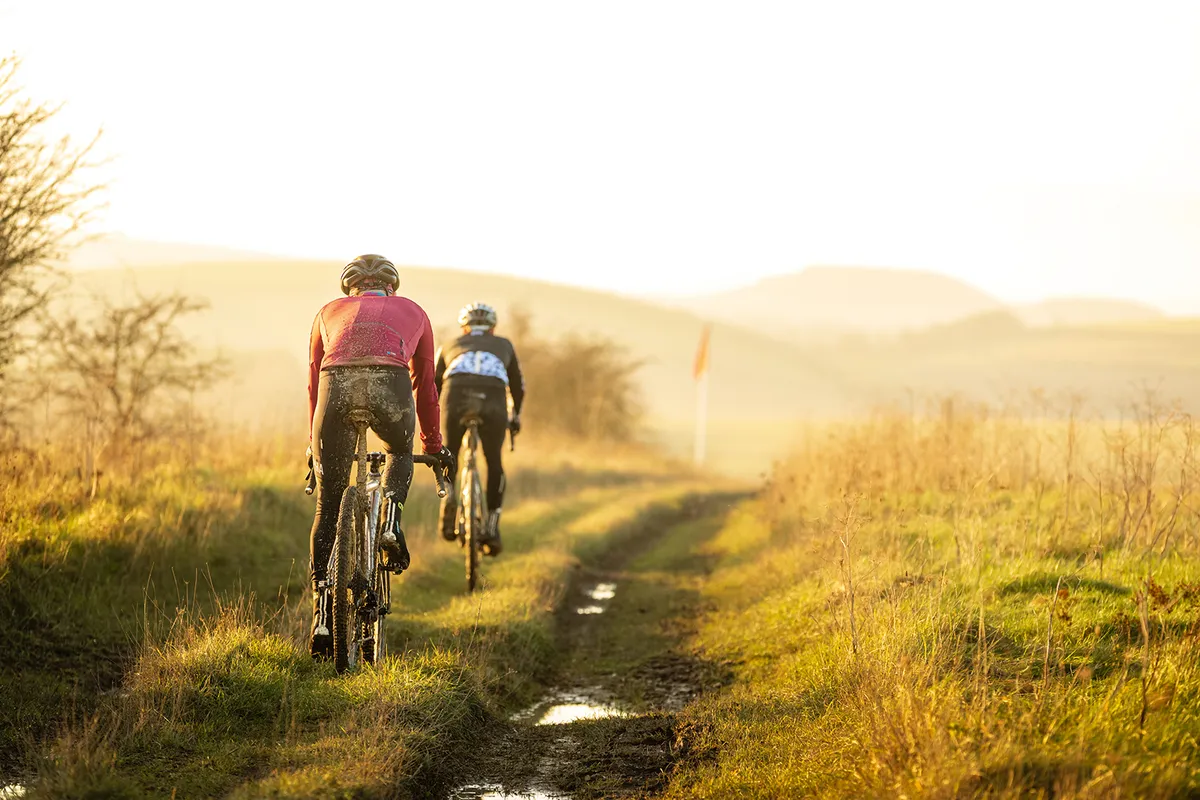
Trying to keep pace with Russ, who with a click of a button would be away in a flash, was fun while we could manage it.
A bike such as the Merlin forces you to make constant calculations as to how you ride and where you put it. Pedal out of the saddle at the wrong moment and your back wheel slides from under you. Arrive at a particular section in the wrong gear and you’re forced off to push. Slide up against a ridge and you’re flat on your back before you know it. At least Russ getting away allowed him to get up the road and snap us on the way through.
Splendid isolation
This was a ride that took us well off the beaten track; self-isolation before it was popularised.
The only people we came across were two women making elevenses for another group on another kind of shoot, with another kind of weapon common in these parts. The booze on tap looked to be flowing far too freely given the firearms in play.
Forget the Haribo fuelling my ride – the sound of gunfire, from both this shoot and the army’s artillery range – open for business today – as we made our way through an opening in the forest, did have the effect of keeping us moving forward with something of the upmost urgency.
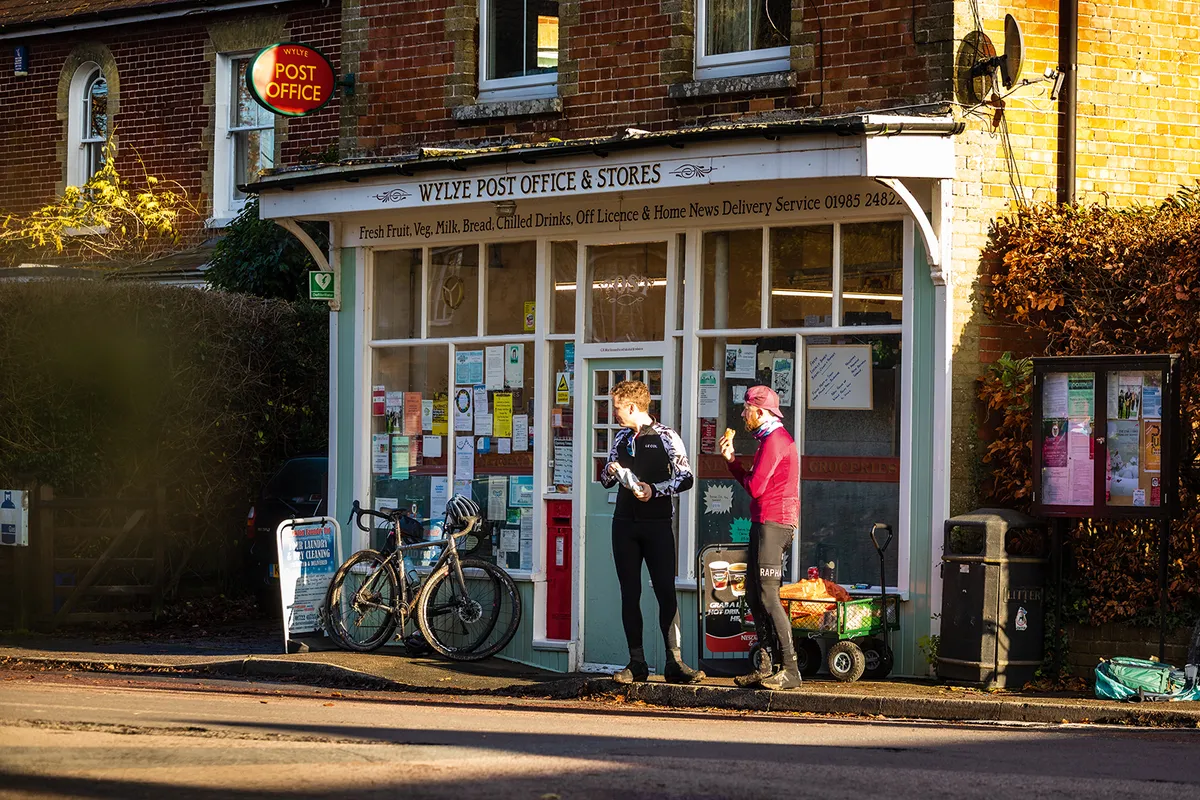
Lunch came in the village of Wylye, where Russ had promised us a sit-down meal in the local pub, The Bell Inn, but it was closed. Instead, we devoured cold Cornish pasties from the post office, quietly freezing on the pavement.
Before our body temperatures dropped to ruinous levels, we jumped back on the bikes and headed up high onto Salisbury Plain, mostly via a paved road. It hurt plenty but it was just the ticket to warm us up again, not that Rob would agree with that sentiment, given his struggles to convert his lunch into valid currency for such a colossal climb.
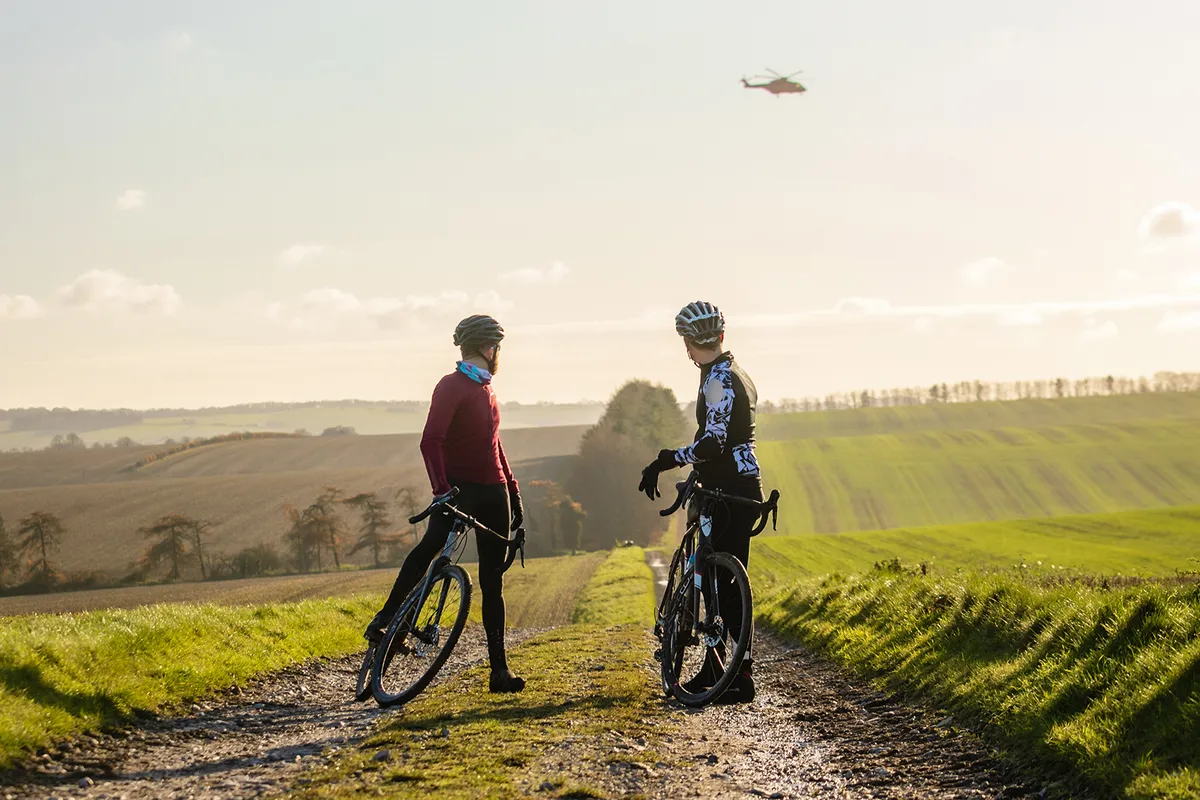
Tarmac would soon give way to dirt, and civilisation to military paraphernalia, as the sight and sound of helicopters, live artillery and eerie fake towns built for army training became the backdrop for our ride.
Dates are published each month when live firing is taking place in various locations on Salisbury Plain, with red flags prohibiting public entry to bridleways, so bear that in mind if you’re considering riding this route, or indeed any time you head out on bikes here.
Fake views
The artificial town in question on this ride is Copehill Down, a 70-acre military training unit built in 1988 at the tail end of the Cold War and resembling a Bavarian village.
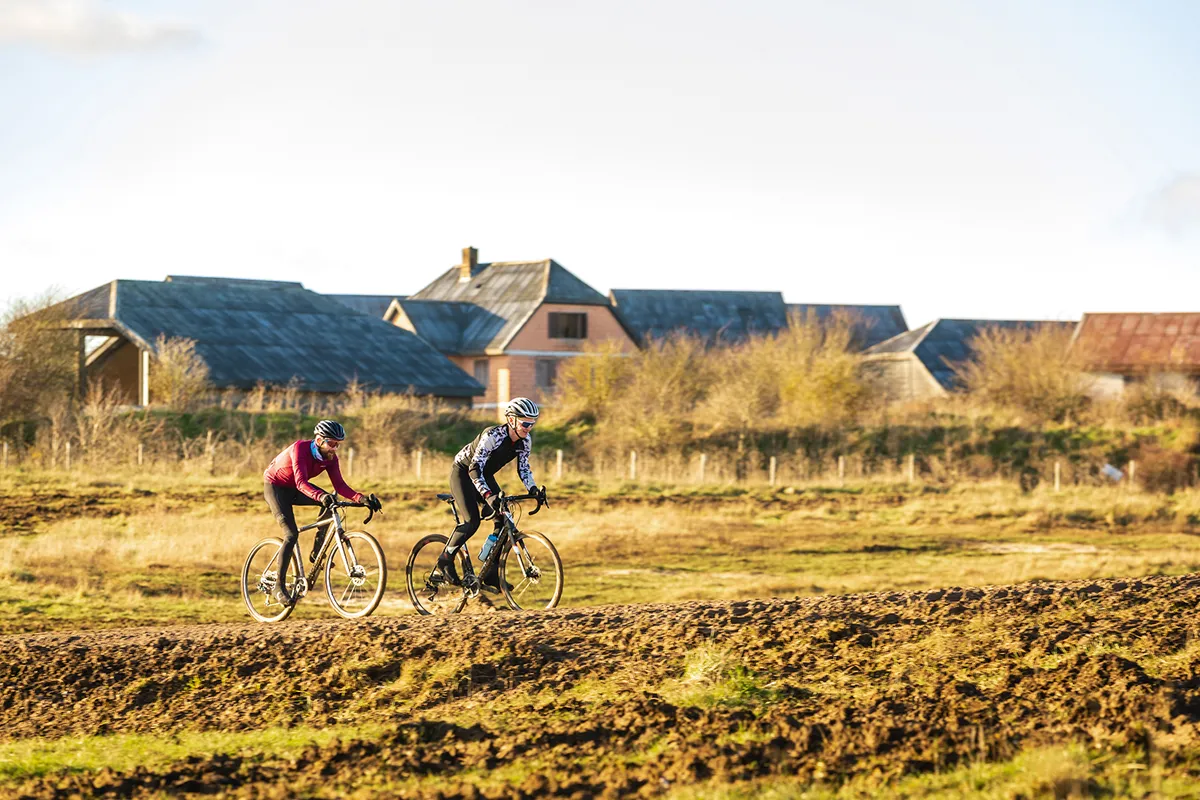
It’s officially called a FIBUA village, or Fighting in Built Up Areas, designed to train soldiers for combat in urban environments. From a distance, it looks like a real, if remote village. The closer you get, however, the more discombobulating its façade, and the more hollowed out its shell.
Not far from here, but inaccessible apart from a few days each year, is the real, but empty, village of Imber. In 1943, during the Second World War, its population was evicted to allow American soldiers space to train in advance of combat operations in Europe. After the war finished, residents weren’t allowed back and it remains under the control of the UK government.
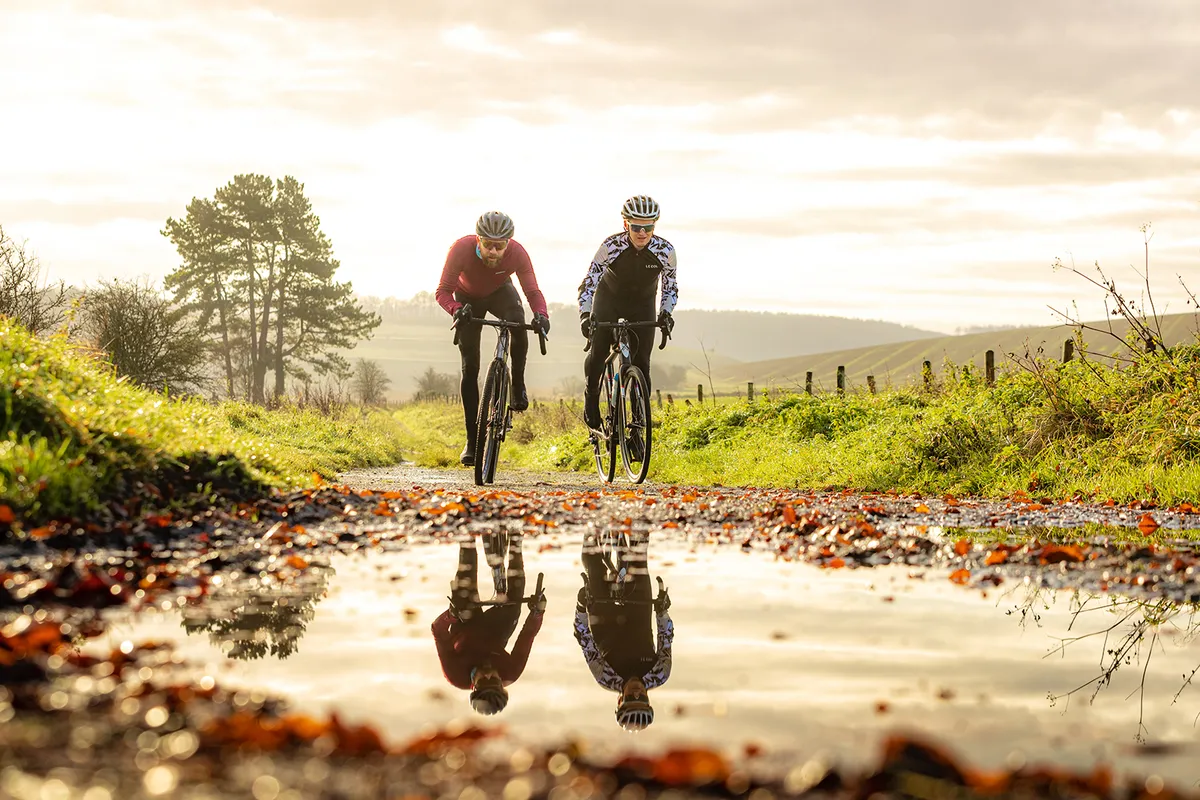
This wasn’t a hilly ride, with 440m of climbing over 46 kilometres, yet both figures vastly underestimate the difficulty. Were this a road ride you could add a 1 in front of both numbers and that wouldn’t over-egg the challenge. The slightest rise became walking pace, steep hills a near standstill. Not even the technical downhills offered a breather.
Having a photographer plugged into the mains didn’t help either. Lines of enquiry to him wondering how much further remained until we returned to base were answered with units of time that it soon became clear were correct only if you had similar means of travel at your disposal.
For Rob and I, what had, until now, been a most pleasurable day out of the office, had turned into a situation where we’d have gladly been put out of our misery. We’d reached that point in our respective tethers where we’d have fought Russ, still gliding along on his gilded steed, and grappled the e-bike for ourselves, had we not needed him for his images.
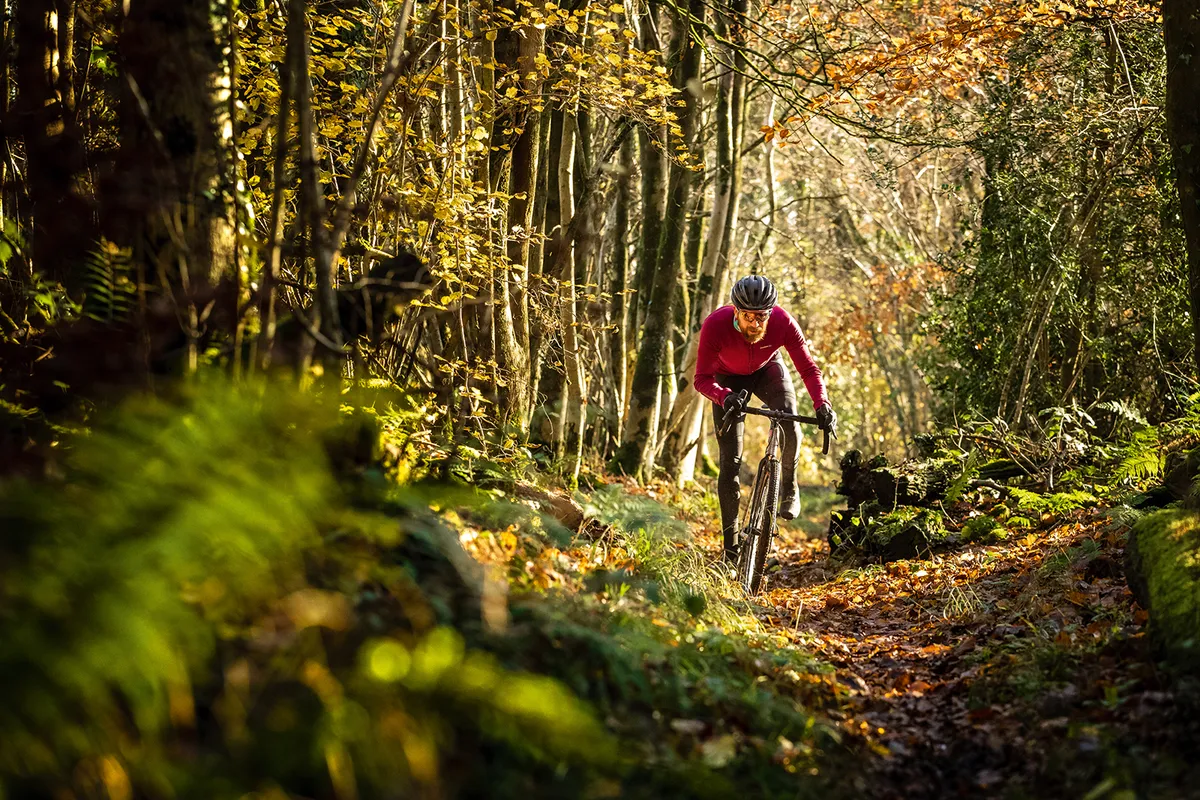
Making our way up another ‘road’ where a plough would be a more appropriate mode of transport, for the first time all day, I missed the comforting drag of the photoshoot van. Such thoughts, thankfully, didn’t last long, as we hit upon the long descent through woodland back to base, collecting some type 1 fun (fun in the moment) after a solid hour of type 2 (only fun in retrospect).
It was a kitchen-sink ride, squeezing in absolutely everything there is to love about a bike ride – and plenty of which there is not! We can’t wait to be able to do it again.
Local knowledge
Distance: 46km /29 miles Total elevation: 440m Grade: Short on distance, high on difficulty Route: Download the full route on Komoot
Getting there: The nearest train station is Warminster and you could easily begin this ride from there, which would add another five miles/half-hour in each direction, along the B3414.
Where to stay: The Dove Inn in nearby Corton has en-suite guest rooms, bar and modern pub food. Bike shops: Warminster’s Cannimore Cycles is run by Cytech Level 2 mechanic John Pagan and offers bike servicing and spare parts. It’s also an approved dealer of Dawes, Avocet and Surly bikes.
Tourist info: Head to Visit Wiltshire for more details on Salisbury Plain and Imber open days, which are typically just for a few days each year. For up-to-date information and times on live firing on the Plain, head to gov.uk and search for Salisbury Plain.
